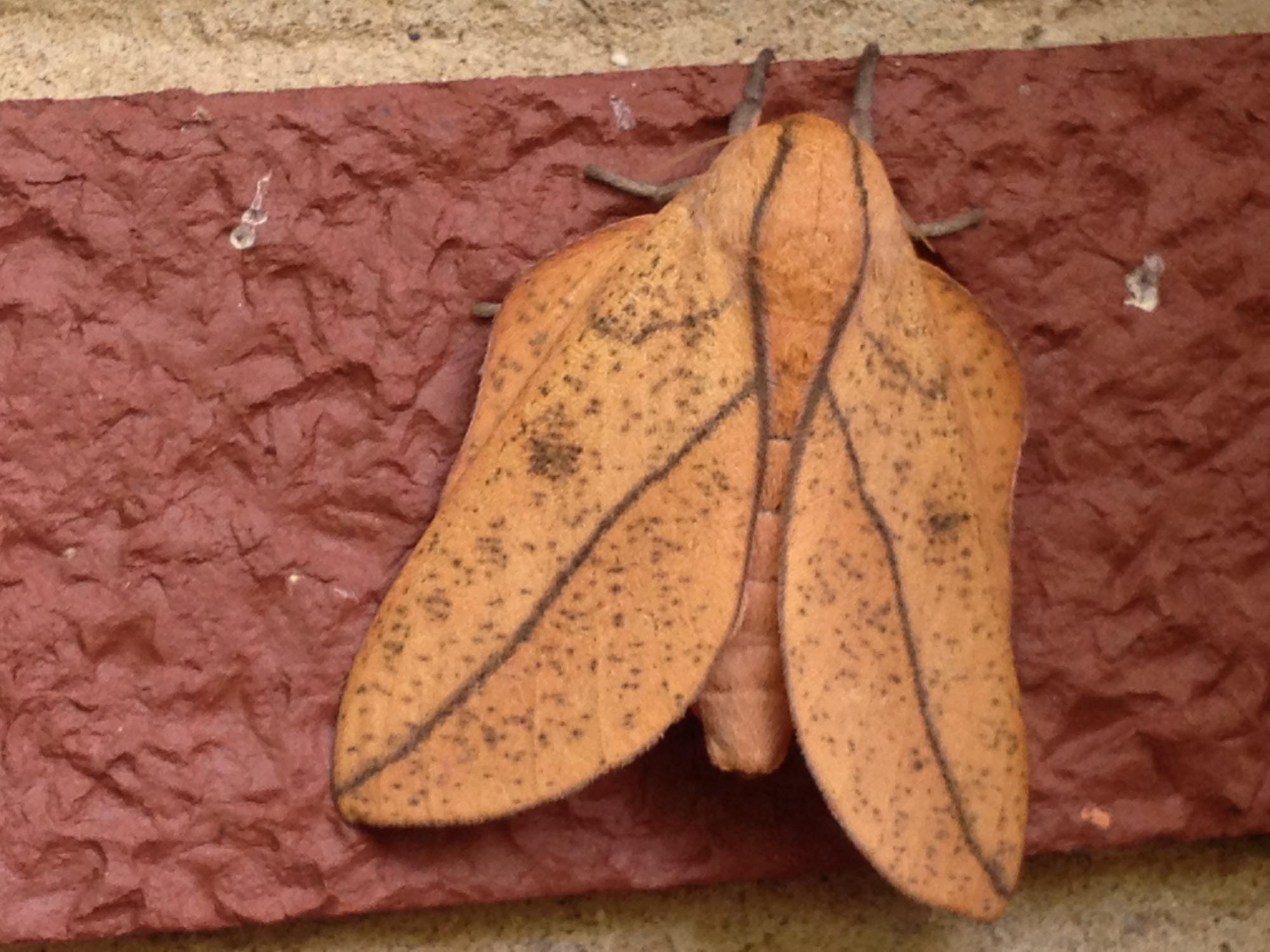HONEY LOCUST MOTH, BISECTED HONEY LOCUST MOTH & spiny oakworm MOTH
Honey Locust Moth. These gorgeous orange and pink creatures belong to the Royal Silkworm family. I have found several individuals at my lights from May through August.
Bisected Honey Locust Moth. This species is similar to the Honey Locust Moths (above), but notice that the bold PM line reaches to the apex (bottom corner) of the wing. By comparison, in Honey Locust Moths, the PM line is diffuse and reaches the wing edge just above the apex.
This Bisected Honey Locust Moth is showing off his rosy pink hindwings. This species flies from late May through August. I find them at my lights in good numbers.

This is the same individual as above, in a curled-up resting posture.
Another Honey Locust Moth. Notice that the two white spots are greatly reduced here, compared with the individual above. Honey Locust Moths can have two white spots on each forewing, one spot, or none at all.
Spiny Oakworm Moth, attracted with UV light. Photographed in southern Ohio at Shawnee State Forest, July 4, 2016. I have not yet found this species in our area. Notice the large white reniform spots.
This is another Bisected Honey Locust Moth. This individual has no pink shading below the PM line (a variable feature).
Bisected Honey Locust Moth, showing off its beautiful rosy-pink hindwings.

Honey Locust Moth photographed at Cox Arboretum, showing his rosy pink hindwings.
Honey Locust Moths come in two different color forms. Both forms have rosy-pink hindwings, but some individuals are orange (like the ones above), and some are drab gray like the one at left.
Another Bisected Honey Locust Moth, with no pink shading below the PM line. This individual is a female, so she looks a little different from the males on this page.
Another Honey Locust Moth. The extent of the pink shading on the lower portion of their wings is variable.
Here is another gray-and-pink form of the Honey Locust Moth.